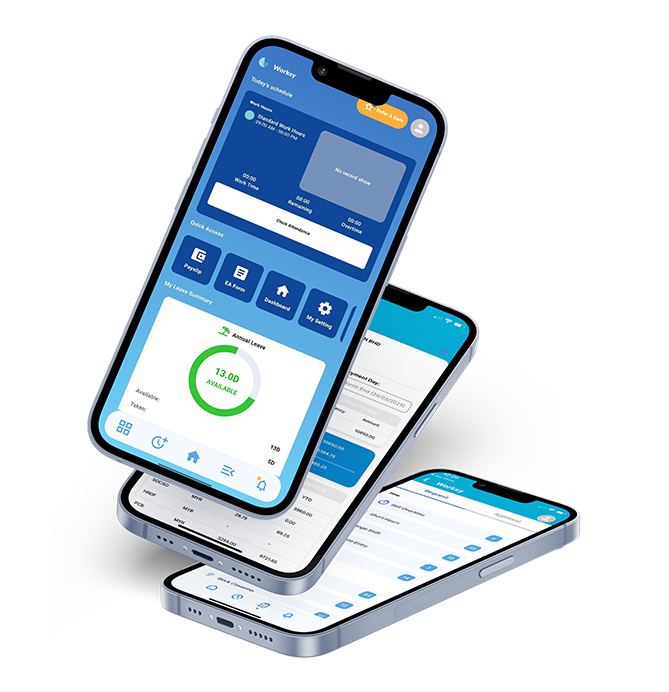scheduled free Worksy HRMS demo.

Government Funding for Trade Unions Malaysia | HR Impact & Strategies
May 6, 2025
Progressive Wage Policy Pilot: Building New Pay Frameworks
May 15, 2025Malaysia’s Unemployment Rate in 2025: Understanding the HR Impact
Malaysia’s unemployment rate has steadily decreased, with projections indicating it will stabilize around 3.2% throughout the year, making it one of the lowest rates recorded in recent history (MIDF’s Research). Such low unemployment signifies a strong economic outlook but also presents unique challenges, especially for HR professionals tasked with talent acquisition and retention.
In this highly competitive job market, the battle for skilled workers is intensifying. HR leaders must revise existing strategies to ensure they can attract and maintain the best talent available, while also adapting to rising employee expectations.
What Are The Key HR Challenges in Malaysia’s Low Unemployment Landscape?
An unemployment rate hovering around 3.2% brings distinctive HR challenges such as:
-
Increased Competition for Talent:
Fewer available candidates mean employers must actively differentiate themselves through attractive packages, strong employer branding, and ideal working environments. -
Increasing Wage Pressure:
Employees have stronger bargaining power, driving salaries upwards and placing pressure on compensation strategies. -
Enhanced Talent Retention Demands:
Retention strategies become critical. Employees know their value and can readily seek new opportunities if their current employer falls short.
Given these conditions, businesses must strategically pivot, using targeted and data-informed approaches to maintain their competitive edge.

Join 3,000+ Malaysian companies using Worksy for HR automation.
Request free demo now*Terms and conditions apply.
5 Effective HR Strategies to Boost Talent Retention in Malaysia (2025)
To effectively manage talent retention amid this historically low unemployment, HR should prioritize the following strategies:
1. Strengthen Employer Branding Initiatives:
Employer branding is crucial in attracting and retaining talent. Prospective employees carry out their own extensive research before joining a company. Strong employer branding showcases organizational culture, values, and benefits clearly. Companies should leverage platforms like LinkedIn and Instagram to share authentic employee stories, insights, and workplace successes, which resonate well with potential hires.
2. Offer Flexible Work Arrangements:
Flexible working options significantly influence job decisions, particularly among younger generations. Whether through hybrid models, fully remote setups, or flexible hours, providing employees control over their work schedules greatly contributes to job satisfaction and loyalty. Leveraging tools like Worksy’s Time & Attendance system can streamline the management and tracking of flexible work patterns effectively.
3. Data-Driven Compensation and Benefits:
Competitive compensation remains a major retention driver. Employers must remain on top of evolving market conditions, using real-time data to set salaries and benefits that are attractive yet sustainable. HR solutions offer comprehensive analytics to accurately benchmark salaries and develop appealing compensation strategies.
4. Prioritize Employee Development and Career Growth:
Employees remain committed to employers who prioritize their professional growth. By providing structured, consistent, and clear paths for career advancement helps employees see long-term value in remaining with the company. Worksy’s Learning & Development module facilitates streamlined management of training programs, enabling HR teams to effectively track professional development and up-skilling efforts.
5. Enhance Employee Engagement and Communication:
Regular employee engagement surveys, open communication channels, and inclusive organizational culture has proven to improves retention significantly. Using platforms like Worksy, HR professionals can capture real-time employee sentiment, enabling timely interventions to improve satisfaction and reduce turnover.
Leveraging HR Analytics for Better Talent Retention Outcomes:
To successfully implement these strategies, HR analytics become crucial. Solutions such as Worksy’s HR Analytics allow organizations to monitor and analyze critical retention metrics—such as turnover rates, satisfaction scores, and compensation effectiveness—enabling strategic, data-informed decision-making.
Conclusion
Malaysia’s low unemployment rate in 2025 presents unique HR challenges but also substantial opportunities. Companies that adapt effectively—focusing on strong employer branding, flexible work environments, competitive compensation, clear development paths, and employee engagement—will succeed in retaining their best talent.
By leveraging the right HR technology, organizations can confidently navigate talent retention challenges, ensuring long-term sustainability and competitive advantage in Malaysia’s labor market.
Optimize your talent retention strategies effectively—Book a personalized demo of Worksy’s comprehensive HRMS solutions today!

Automate HR with Worksy - trusted by 3,000+ companies.
Request free demo now*Terms and conditions apply.



